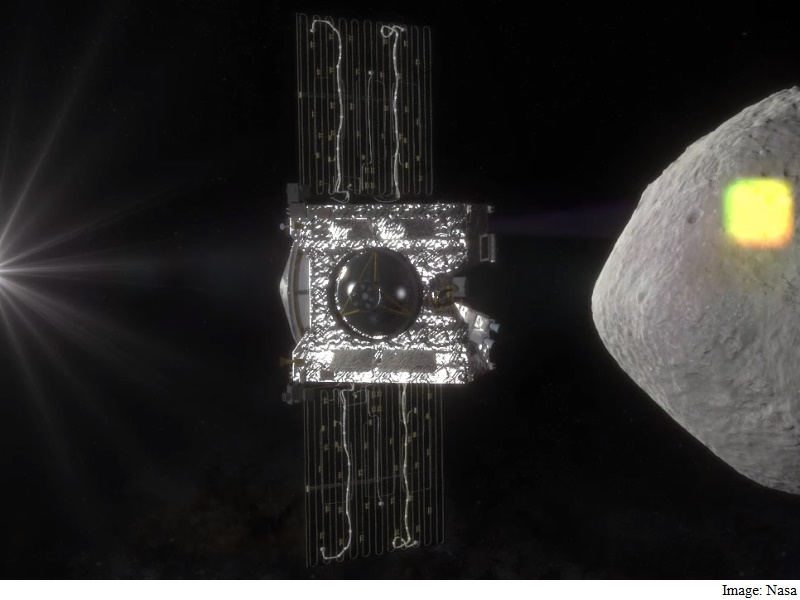- Home
- Science
- Science News
- Nasa Probe Set to Rendezvous With Asteroid 'Bennu' in August 2018
Nasa Probe Set to Rendezvous With Asteroid 'Bennu' in August 2018

Such an event will not take place for 150 years and the people living in the year 2135 would know whether the asteroid named Bennu posed an actual threat to hit Earth, ABC News reported on Monday.
According to Dante Lauretta, professor of planetary science at University of Arizona and the principal investigator on the Osiris-Rex mission, "don't run out and buy asteroid insurance" yet.
The Osiris-Rex Mission, headed by Nasa and the University of Arizona, plan to launch an unmanned spacecraft on September 8 in the efforts to reach Bennu in August 2018.
Osiris-Rex will launch from Cape Canaveral, Florida, on an Atlas V 411 rocket during a 34-day launch period starting September 8.
It will orbit the Sun for a year and then use Earth's gravitational field to assist it on its way to Bennu.
In August 2018, Osiris-Rex's approach to Bennu will begin.
It will use an array of small rocket thrusters to match the velocity of Bennu and rendezvous with the asteroid.
The spacecraft will begin a detailed survey of Bennu two months after slowing to encounter Bennu.
"The process will last over a year, and, as part of it, Osiris-Rex will map potential sample sites," said information available on asteroidmission.org.
After the selection of the final site, the spacecraft will briefly touch the surface of Bennu to retrieve a sample.
The sampling arm will make contact with the surface of Bennu for about five seconds, during which it will release a burst of nitrogen gas.
The procedure will cause rocks and surface material to be stirred up and captured in the sampler head.
"In March 2021, the window for departure from the asteroid will open and Osiris-Rex will begin its return journey to Earth, arriving two and a half years later in September 2023," the website said.
The sample return capsule will separate from the spacecraft and enter the Earth's atmosphere.
For two years after the sample return, the science team will catalogue the sample and conduct the analysis needed to meet the mission science goals.
Nasa will preserve at least 75 percent of the sample at Nasa's Johnson Space Flight Center in Houston for further research by scientists worldwide, including future generations of scientists.
Catch the latest from the Consumer Electronics Show on Gadgets 360, at our CES 2026 hub.
Related Stories
- Samsung Galaxy Unpacked 2025
- ChatGPT
- Redmi Note 14 Pro+
- iPhone 16
- Apple Vision Pro
- Oneplus 12
- OnePlus Nord CE 3 Lite 5G
- iPhone 13
- Xiaomi 14 Pro
- Oppo Find N3
- Tecno Spark Go (2023)
- Realme V30
- Best Phones Under 25000
- Samsung Galaxy S24 Series
- Cryptocurrency
- iQoo 12
- Samsung Galaxy S24 Ultra
- Giottus
- Samsung Galaxy Z Flip 5
- Apple 'Scary Fast'
- Housefull 5
- GoPro Hero 12 Black Review
- Invincible Season 2
- JioGlass
- HD Ready TV
- Laptop Under 50000
- Smartwatch Under 10000
- Latest Mobile Phones
- Compare Phones
- OPPO Reno 15 Pro Max
- Honor Win RT
- Honor Win
- Xiaomi 17 Ultra Leica Edition
- Xiaomi 17 Ultra
- Huawei Nova 15
- Huawei Nova 15 Pro
- Huawei Nova 15 Ultra
- Asus ProArt P16
- MacBook Pro 14-inch (M5, 2025)
- OPPO Pad Air 5
- Huawei MatePad 11.5 (2026)
- Xiaomi Watch 5
- Huawei Watch 10th Anniversary Edition
- Acerpure Nitro Z Series 100-inch QLED TV
- Samsung 43 Inch LED Ultra HD (4K) Smart TV (UA43UE81AFULXL)
- Asus ROG Ally
- Nintendo Switch Lite
- Haier 1.6 Ton 5 Star Inverter Split AC (HSU19G-MZAID5BN-INV)
- Haier 1.6 Ton 5 Star Inverter Split AC (HSU19G-MZAIM5BN-INV)

















